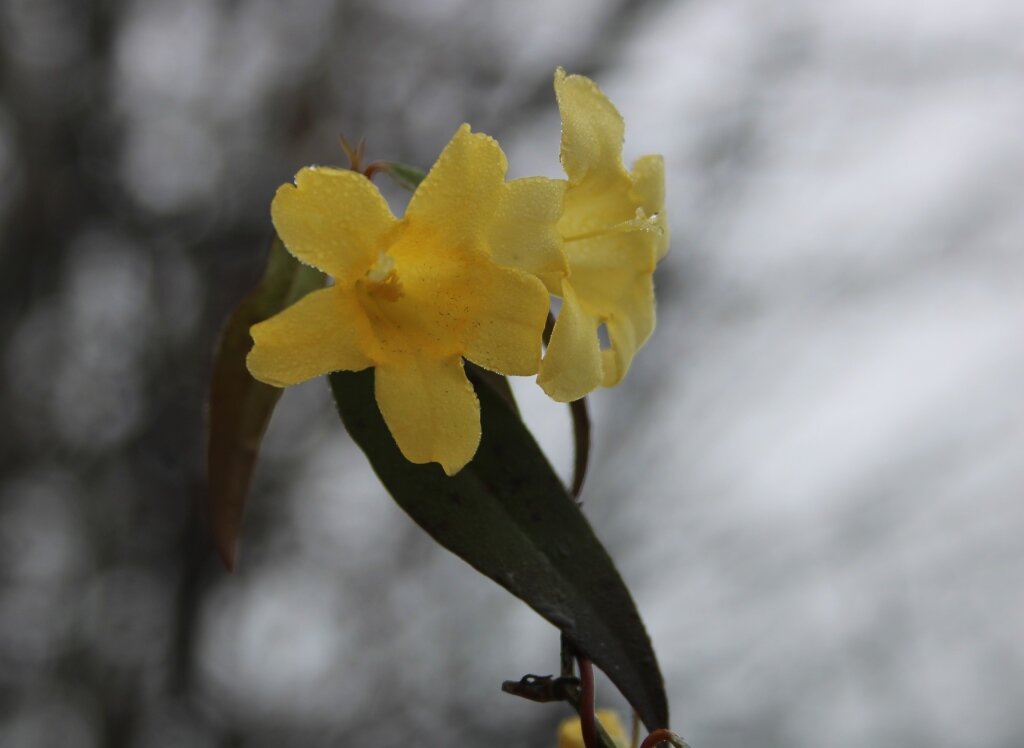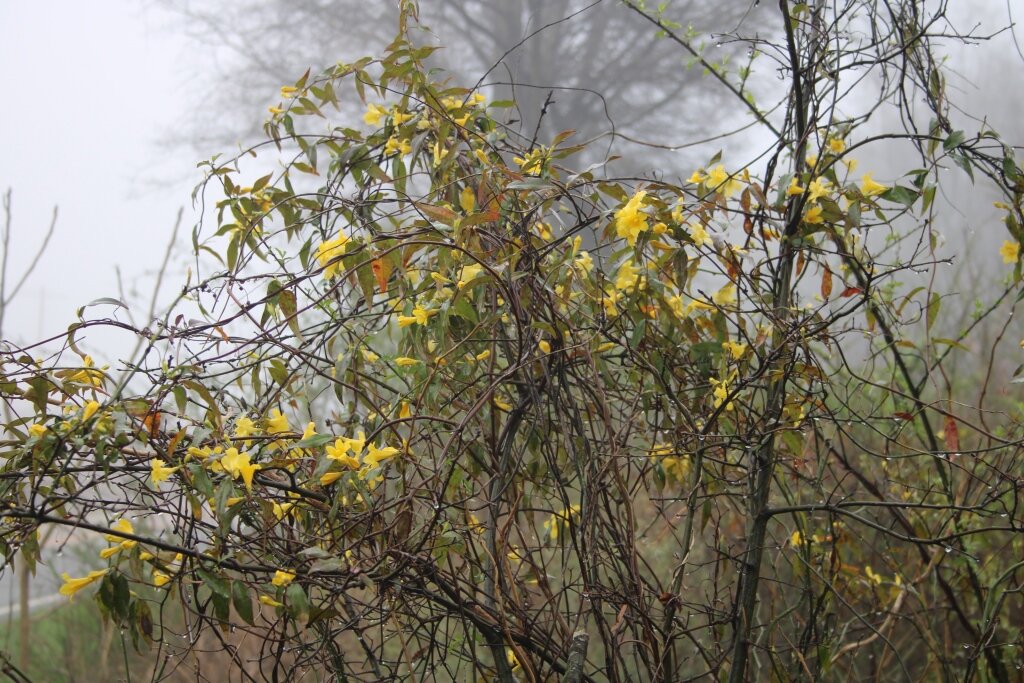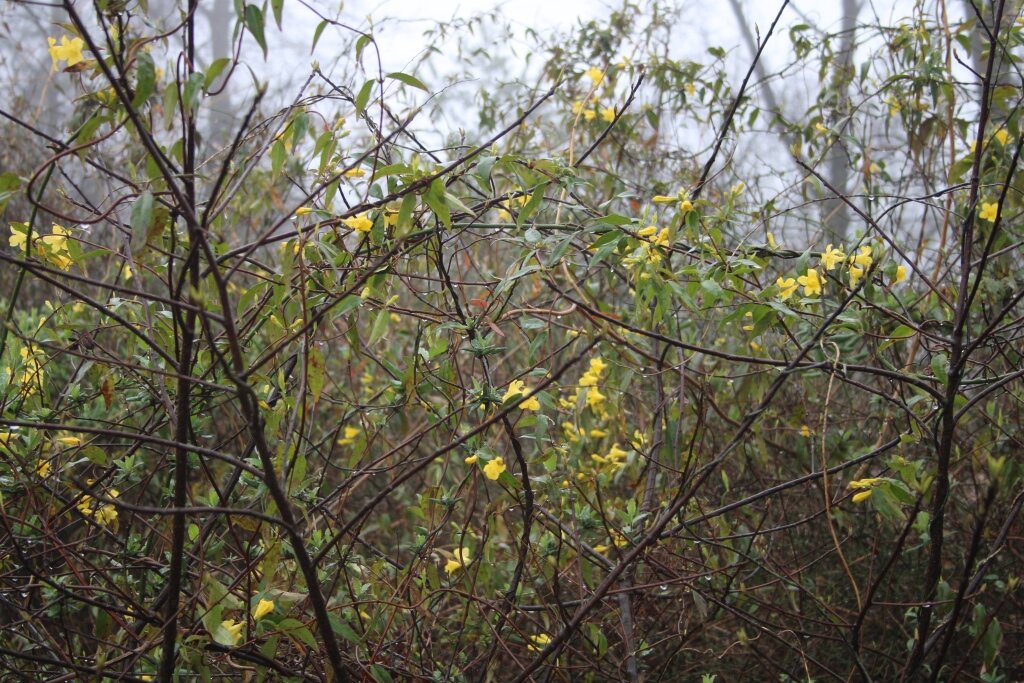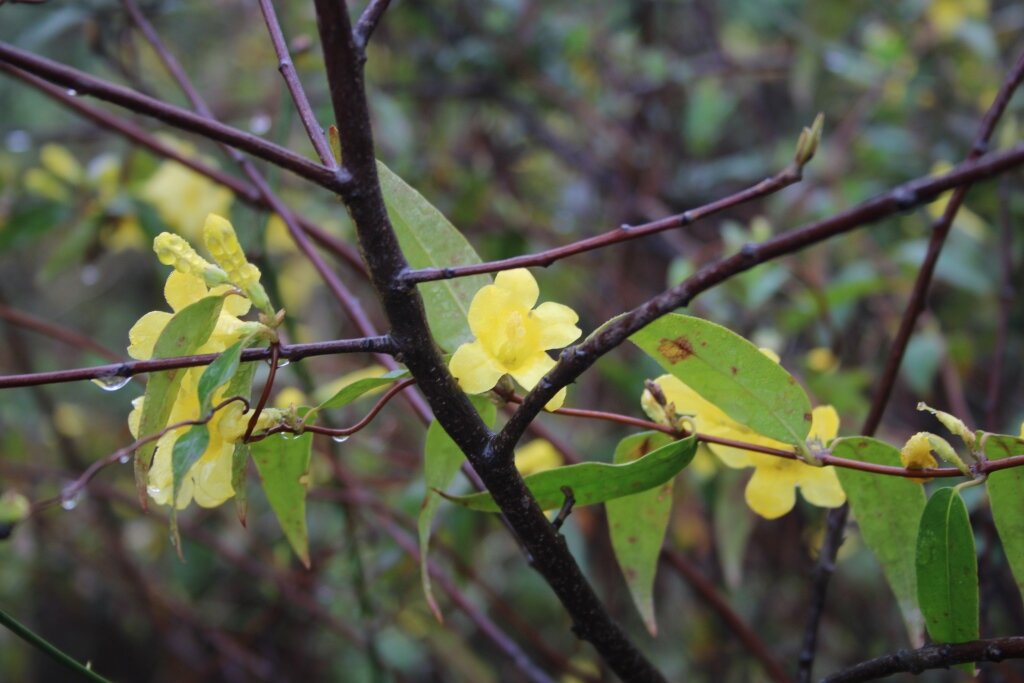When we first moved to our current property, I was excited to find Maypop plants (Passiflora incarnata, pronounced pas-si-FLOR-ah in-kar-NAH-tuh) growing. This native vine tolerates heat and drought. I found it in sunny areas as well as partly sunny areas, on inhospitable soils that receive no supplemental irrigation. Maypop is cold hardy in zones 5-9. It borders on aggressive in the Snoddy garden. I have tried to eradicate it in several unwanted locations, but it springs back to life from its deep roots. It grows very rapidly, and can be used as a groundcover.
Another common name for Maypop is Passionflower. The intricate flowers are purple and white, with a central structure that was used by Catholic priests in the 16th century to symbolize or describe the crucifixion of Jesus Christ, the passion. How did the common name arise? Well, if you step on one of the fruits, it “may pop.”
I allowed several vines to remain in the pollinator bed next to our orchard (okay, I got lazy and allowed them to flourish unchecked). The flowers are beautiful, unlike anything else. I was looking forward to eating the egg-size fruit, which is reputed to be delicious. The internal structure is similar to pomegranate. I kept an eye on them, ready to harvest as soon as the lime-green fruits turned yellow. Unfortunately, the wild creatures that live in our woodlands are not so patient. They removed the almost-ripe fruits from my vines. All but one, and that one lonely survivor showed teeth marks from either groundhogs, opossums, skunks, or rabbits. Sorry, I don’t share food with rodents.
Even without harvesting a single fruit, I am glad that I allowed the vines to remain. Their leaves have fed a number of different larvae and adult butterflies have flocked to the flowers. A common name for the Gulf fritillary butterfly is passion butterfly. While Maypop fruit is edible, the vine stems and leaves are toxic to humans, dogs, cats, and horses. Deer leave the vines untouched, but Japanese beetles devour the foliage. Despite its toxicity, Maypop would make a great addition to a pollinator garden, especially when planted in a container to eliminate root spread and given a trellis to support its climbing via tendrils. One trusted university source says that the vines are extremely flammable and should not be planted near the home.











